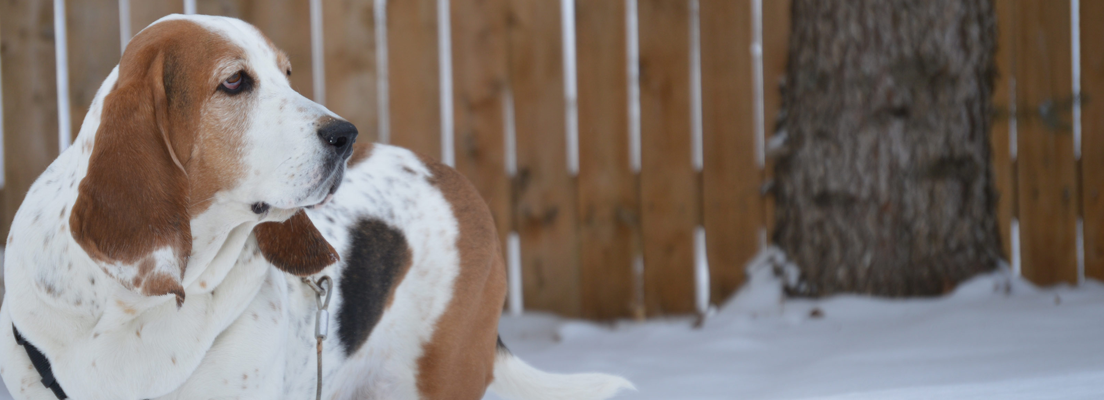|
Hypothyroidism
Thyroid hormone ( also known as T4 ), controls an animals metabolism,
and virtually every cell in the body can be affected by reduced levels
of thyroid hormone. The thyroid glands , located on either side of the
trachea, produce thyroid hormone. Production of thyroid
hormone (T4) by the thyroid gland, is controlled by the pituitary gland.
When thyroid hormone (T4) levels are low, the pituitary gland produces
Thyroid Stimulating Hormone ( TSH ), which causes the thyroid gland to
produce more thyroid hormone.
Common clinical signs associated with Hypothyroidism are:
*Skin and coat abnormalities ( 'Rat tail' is common )
*Obesity
*Weakness or lethargy
*Anemia ( reduced red blood cells in the circulatory system )
*"Tragic Face" ( thickening of the skin of the head and face )
*Slow heart rate
*Neurological signs, especially muscle weakness.
*Corneal dystrophy ( white spots on eye )
Diagnosis of Hypothyroidism
Many
factors influence circulating T4, including systemic disease or
illness. Thus diagnosis of hypothyroidism can be complex at times.
Usually
diagnosis of Hypothyroidism is determined by a low level of thyroid
hormone ( T4 ), and an elevated level of Thyroid Stimulating Hormone (TSH). This is done through bloodwork. Sometimes additional thyroid
function tests are required to confirm diagnosis of hypothyroidism.
Treatment of Hypothyroidism
Fortunately
hypothyroidism is readily treatable by oral supplementation with a
thyroid hormone replacement called Levothyroxine. Most dogs require
twice a day supplementation, because the therapeutic life of
Levothyroxine is 12 hours. Treatment is for the remainder of a dogs
life.
Brand names of Levothyroxine, rather than generic forms, seem to provide the most consistant and reliable treatment for dogs.
Dogs receiving excessive doses of Levothyroxine can display any number of the following signs:
*Panting, nervousness, excitability, rapid heart rate, increased thirst, and increased appetite.
Monitoring treatment of Hypothyroidism
Because
each animal metabolizes Levothyroxine differently, periodic blood
testing is required. Blood testing ensures your pet is receiving the
proper dose of Levothyroxine ( not too much, not too little ).
Six
weeks after a pet has been started on Levothyroxine, ( or 6 weeks after
a change in dosage ), a blood sample is drawn, and sent to a laboratory
for analysis. Timing of the blood sampling is important. Blood is
drawn 4 to 6 hours after the last dose of Levothyroxine.
Once
a therapeutic dose has been determined, thyroid levels should be
checked yearly, unless signs of thyroid overdose exist, or significant
changes in body weight occur.
| 